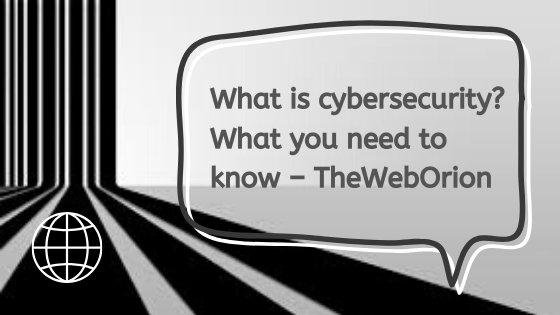Cybersecurity is the state or process of protecting and recovering networks, devices, and programs from any type of cyberattack.
Cyberattacks are an evolving danger to organizations, employees, and consumers. They may be designed to access or destroy sensitive data or extort money. They can, in effect, destroy businesses and damage people’s financial and personal lives.
Cybersecurity has become one of the prevailing issues of our time – with so much of our data now being transmitted online, the risk of a major loss is significant, and very real, which is why we all need to take precautions.
Are you aware of the varying types of cybersecurity threats you now face every time you go online? What’s the best defense? A strong cybersecurity system has multiple layers of protection spread across computers, networks, and programs. But a strong cybersecurity system relies not only on cyber defense technology but also on people making smart cyber defense choices.
The good news? You don’t need to be a cybersecurity specialist to understand and practice cyber defense tactics. This guide can help. You’ll learn more about cybersecurity and how to help defend yourself against cyber threats. It could help you recognize and avoid threats before they’re able to infiltrate your network or device.
Types of cyber threats
There are many types of cyber threats that can attack your devices and networks, but they generally fall into three categories. The categories are attacks on confidentiality, integrity, and availability.1
- Attacks on confidentiality. These include stealing your personal identifying information and your bank account or credit card information. Many attackers will take your information and sell it on the dark web for others to purchase and use.
- Attacks on integrity. These attacks consist of personal or enterprise sabotage and are often called leaks. A cybercriminal will access and release sensitive information to expose the data and influence the public to lose trust in that organization.
- Attacks on availability. This type of cyberattack aims to block users from accessing their data until they pay a fee or ransom. Typically, a cybercriminal will infiltrate your network and block you from accessing important data, demanding that you pay a ransom. Companies sometimes pay the ransom and fix the cyber vulnerability afterward so that they can avoid halting business activities.
Here are a few types of cyber threats that fall into the three categories listed above:
Social engineering, a type of attack on confidentiality, is the process of psychologically manipulating people into performing actions or giving away information. Phishing attacks are the most common form of social engineering. Phishing attacks usually come in the form of a deceptive email that tricks the user into giving away personal information.
APTs (Advanced Persistent Threats), a type of attack on integrity, are attacks where an unauthorized user infiltrates a network undetected and stays in the network for a long time. The intent of an APT is to steal data and not harm the network. APTs happen most often in sectors with high-value information, such as national defense, manufacturing, and the finance industry.
Malware, or malicious software, is a type of attack on availability. It refers to software that is designed to gain access or damage a computer without the knowledge of the owner. Several common types of malware include spyware, keyloggers, true viruses, and worms.
Follow these steps for cyber safety.
- Only use trusted sites when providing your personal information. A good rule of thumb is to check the URL. If the site includes “https://,” then it’s a secure site. If the URL includes “HTTP://,” — note the missing “s” — avoid entering sensitive information like your credit card data or Social Security number.
- Don’t open email attachments or click links in emails from unknown sources. One of the most common ways people are attacked is through emails disguised as being sent by someone you trust.
- Always keep your devices updated. Software updates contain important patches to fix security issues. Cyberattackers thrive on outdated devices because they don’t have the most current security software.
- Back up your files regularly to prevent cybersecurity attacks. If you need to wipe your device clean due to a cyberattack, it will help to have your files stored in a safe, separate place.
Cybersecurity is constantly evolving, which can make it difficult to stay up to date. Staying informed and being cautious online are two of the best ways to help protect yourself and your business. To learn more about cybersecurity, visit our blogs for the latest cybersecurity news.
Contact TheWebOrion.com to secure your website by experts.
